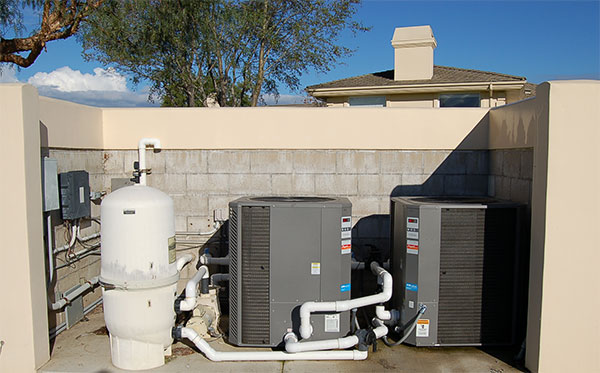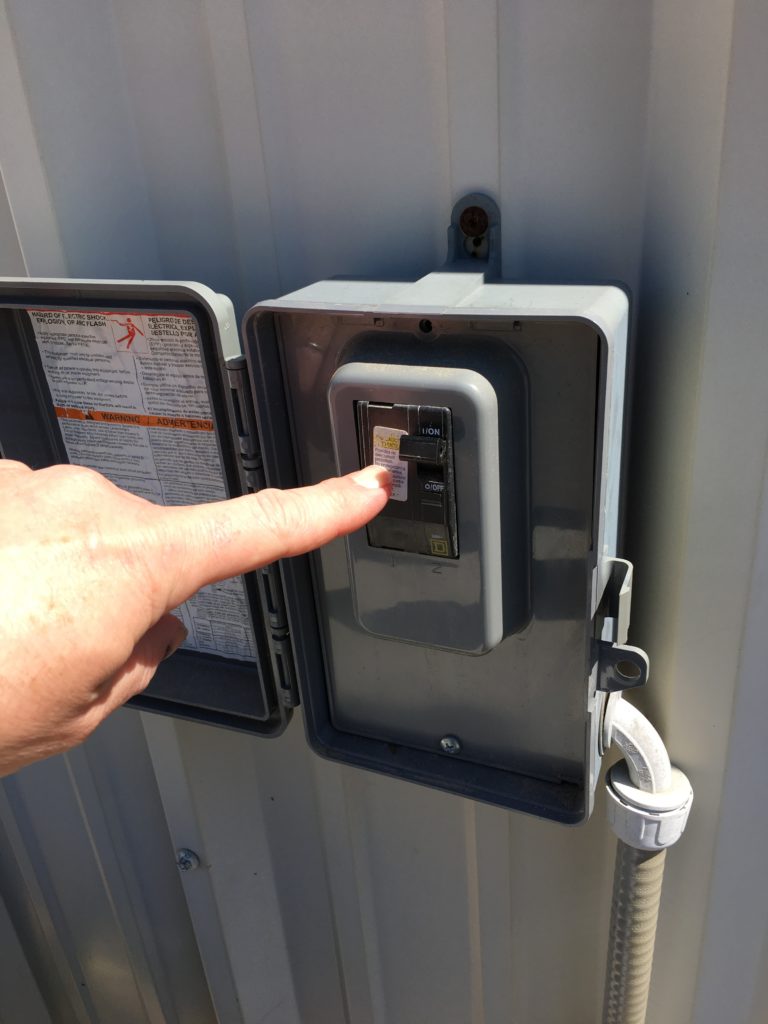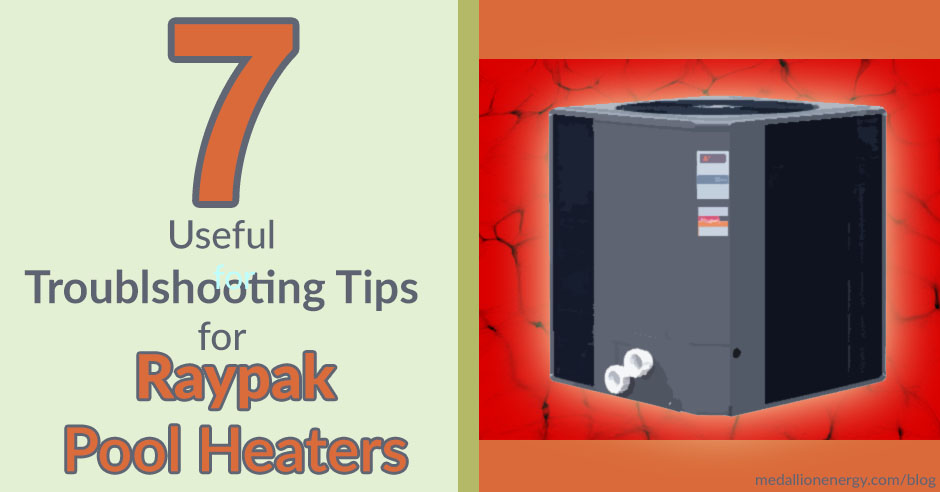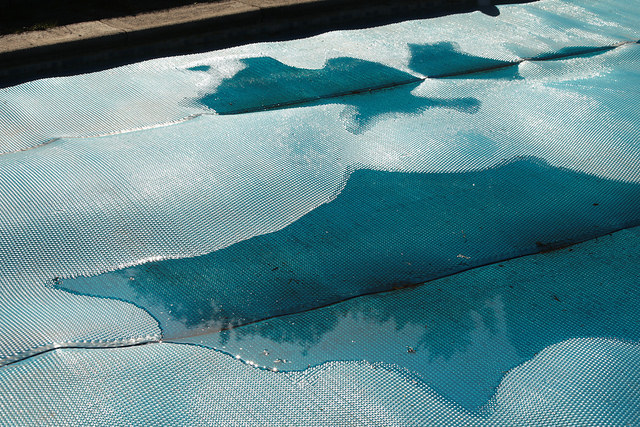Your Raypak pool heater keeps your pool comfortable throughout the seasons. So naturally, it gets a lot of use during that time.
While pool heat pumps are built to provide countless hours of heat, they still need maintenance to stay at peak performance.
After heating thousands of gallons of water, certain parts in your pool heater may begin wearing down. Which results in the heater running in unusual ways.
Heating up the water starts taking longer, and sometimes the pump shuts off at random.
You’re not sure of the cause, but you know that you want to get your pool heater working again. And that’s why these Raypak pool heater troubleshooting tips are perfect for you.
In this post, we go over a few things you can do to make troubleshooting your Raypak pool heat pump much easier.
7 Useful Raypak Pool Heater Troubleshooting Tips
Have the right tools for the job



Although most of the troubleshooting tips in this post don’t require opening up the heater, having the tools for the job comes in handy later.
When you’re ready to troubleshoot your pool heater and get it fixed, you’ll want to be prepared. Having the right tools from the start helps you troubleshoot your pool heater faster.
Before calling for heat pump service, gather these tools:
- Multimeter capable of checking AC volts, DC volts, and Ohms
- 24”Manometer (for fan assisted units, more than one manometer will be needed).
- 5/16 nut driver
- Screwdriver
- Channel Locks
- Needle-Nose Pliers\
- Combustion Analyzer needed for all commercial units.
If the unit doesn’t run, check the water flow lamp
If one day you wake up and your pool heat pump stops running, the first thing to check is your water flow.
Without an adequate source of water, a pool heat pump automatically shuts down to prevent overheating. This is sometimes the cause of what many describe as a pool heat pump turning off and on.
If your pool heater keeps turning off and on, check to see if the water flow light on the display is lit up. If your unit doesn’t have this light, then walk over to your filter pump and check the pressure.
A few areas to clean & check for blockage include:
- Your filter
- Your filter pump’s basket
- Your skimmer basket
- & the multiport valve positions
Related: Pool Heater Won’t Turn On
Run the pump for at least 8 hours to test heat loss



Maybe your pump turns on just fine but doesn’t heat the way it used to. For some reason, it seems as if it’s only heating half as well, and taking twice as long.
Although poor heating ability can be a sign of a dirty evaporator coil (more on this later), there are a few things to consider when heat loss is an issue.
- Is the temperature at least 60 degrees or more?
- If it’s too cold out, the performance of your pool heat pump will naturally be affected due to a lack of ambient heat.
- Are you running the heater at least 8 hours each day?
- In order to warm the majority of your pool’s water, your heater needs at least 8 or more hours of run time
- Are you using a solar cover?
- A solar cover reduces heat loss by 75%. By using a cover, you can test whether or not your heater is the source of the problem
Check air flow to troubleshoot a lack of heat
If you’ve gone through all the previous steps for troubleshooting heat loss, the cause of the problem might be a dirty evaporator coil.
The evaporator coil is the part responsible for turning harvested warm air into usable heat for your pool. Each day, a bunch of air passes through the coil.
Over time, the coil begins builds up a layer of debris, dirt, and grease from processing so much air. An annual heat pump service takes care of this, cleaning the coil and any other related parts.
That said since your evaporator coil sits behind a layer of metal vents, the blockage could also be there.
If you see any leaves or twigs lodged in the vents, remove them. Any debris caught in the vents can impact air floor.
So the clearer the airway the better.
Reset the breaker to troubleshoot an unresponsive display board



There might be a few cases when you can’t even get ANYTHING to show up on display board.
No “ON” lights, no water flow indicators. Nothing. Just a blank screen.
Fortunately, this doesn’t always mean that your pool heater is toast. Instead, what you’re dealing with is likely an electrical issue.
To troubleshoot this:
- Walk over to your pool heater’s breaker and reset it
- Go back and check the display. Is it on?
- If not, check out electrical connection points for damage or corrosion.
- If everything looks normal, but your heat pump is unresponsive, contact a pool heat pump technician for advanced troubleshooting steps.
Look out for Raypak heat pump error codes
Every now and then, your Raypak pool heat pump might display a code. These codes help you understand what problems your heater is having.
Here are a few common Raypak troubleshooting codes and what they mean. Use these to troubleshoot your Raypak pool heater:
- LP & LP3
- Low refrigerant if one “LP”
- If “LP3”, likely a low-pressure issue
- HP & HP6
- Low water flow
- Faulty high-pressure switch (shuts down to protect unit)
- FLo & FL3
- Pump is off or backwashing
- Dirty pool filter
- Low water
- Faulty water pressure switch
- FS
- Defrosting cycle (a regular function)
Use a solar cover to pinpoint the source of heat loss
As mentioned earlier, using a solar cover helps you pool hold on to heat more effectively. But it’s also a quick way to determine the source of heat loss.
By applying a solar cover, you can figure out whether it’s your pool or pool heater that’s creating the heat loss.
If it’s your pool, and likely the outdoor temperature, then applying a solar cover will make a noticeable difference.
But if the issue is your pool heater, then you’ll still experience significant heat loss with or without the cover.
Closing thoughts on these Raypak pool heater troubleshooting tips
Effective Raypak pool heater troubleshooting is all about knowing what to look for, and what the signs mean. Although all pool heat pumps need maintenance to maintain performance, a bit of troubleshooting can save you a lot of time.
When you know what’s causing a problem with your pool heater, then fixing it is way simpler. But when you can’t figure out the problem yourself, you can get pool heater troubleshooting help over the phone.
If you liked this post, you might also like:



